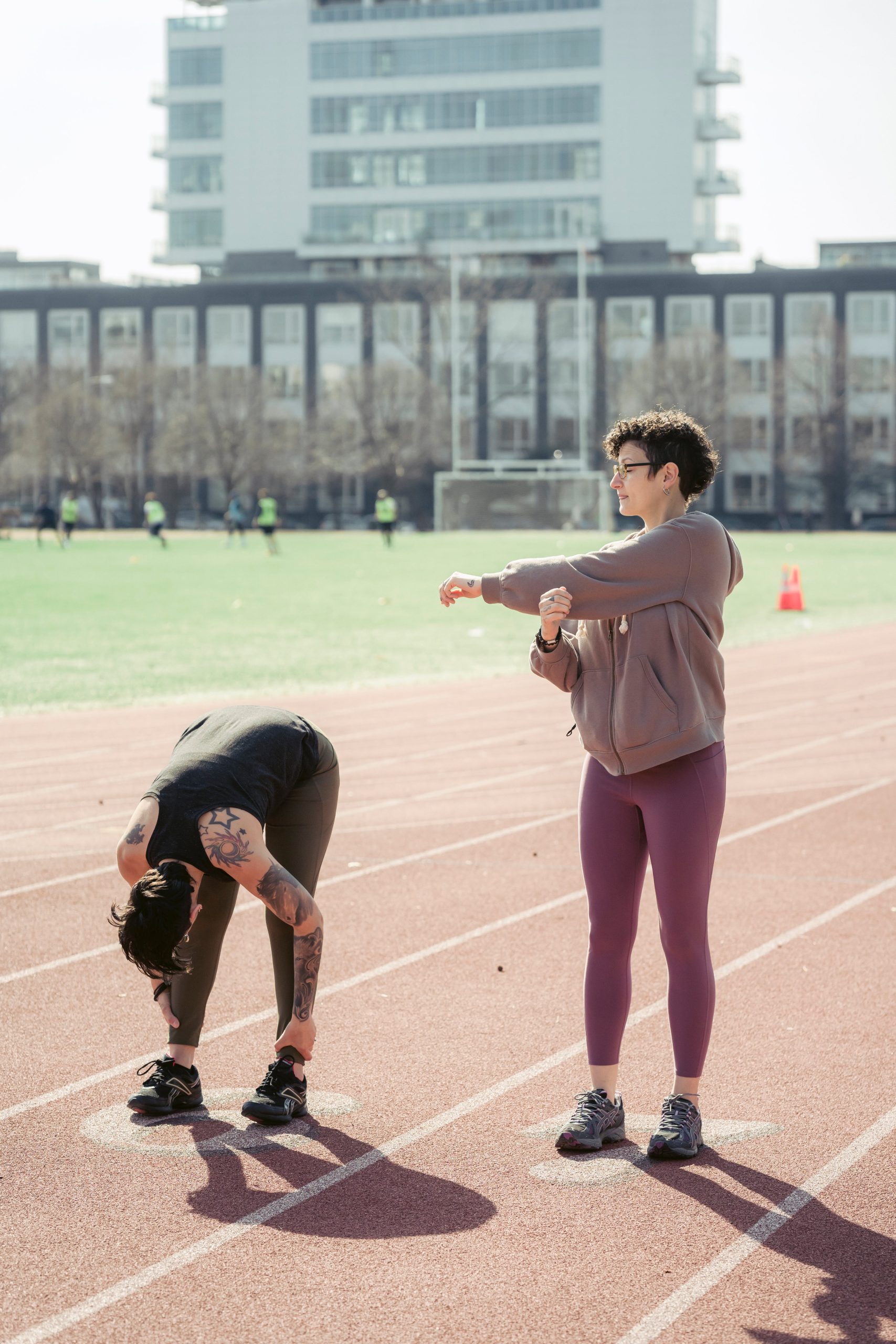Running is more than just a physical activity; it’s a journey towards achieving *fitness freedom* and embracing the joy of movement. Whether you’re a seasoned marathoner or a novice hitting the pavement for the first time, understanding **how to improve your running fitness** can drastically transform your experience and results. This guide is designed to help you unlock your full potential, offering insights into optimizing your workout routine, enhancing endurance, and discovering new trailblazing adventures.
At the heart of running lies a combination of strength, stamina, and technique. By focusing on these core elements, you can develop a personalized training plan that not only boosts your **performance** but also enriches your overall well-being. From tailored workouts to nutritional strategies, every step you take is an opportunity to leap closer to your fitness goals.
Running fitness is about more than just speed or distance; it’s about building a sustainable habit that brings joy and satisfaction. Embracing a holistic approach ensures that you not only see improvements in your running times but also experience a mental and emotional uplift.
Are you ready to embark on this exciting journey? **Visit our website to learn more and get started today!** Click here to explore tailored workouts, connect with a passionate running community, and take your first step towards a healthier, happier you.
Understanding the Basics of Running Mechanics

To truly enhance your running fitness, it’s essential to grasp the **fundamentals of running mechanics**. The way your body moves during a run can significantly impact your efficiency, speed, and risk of injury. Understanding these basics will lay the groundwork for improving your overall performance.
At the core of running mechanics is the running gait cycle, which consists of two main phases: the stance phase and the swing phase. The stance phase is when your foot is in contact with the ground, and the swing phase is when it moves through the air. Proper coordination between these phases ensures effective momentum and reduces strain on your muscles.
Posture plays a crucial role in running mechanics. Maintaining an upright stance with a slight forward lean from the ankles, not the waist, can improve your balance and reduce the risk of fatigue. Additionally, keeping your arms relaxed and swinging them naturally by your sides helps to stabilize your upper body and propel you forward.
Another critical aspect is foot strike. Whether you land on your heel, mid-foot, or forefoot, each has its advantages and potential drawbacks. Experimenting with different foot strikes and finding what feels most natural can help you run more comfortably and efficiently.
By focusing on these mechanical elements, you can make subtle adjustments to your technique that lead to significant improvements in your running performance. As you refine these basics, you’ll find yourself running more effortlessly and with greater enjoyment.
Developing a Personalized Running Routine

Crafting a running routine tailored to your unique needs and goals is pivotal in answering the question, **”how to improve my running fitness”**. By customizing your plan, you ensure that each session contributes meaningfully towards your fitness milestones while keeping you motivated and engaged.
Begin by assessing your current fitness level, setting realistic goals, and understanding your personal constraints such as time availability and any physical limitations. This will help in creating a balanced routine that includes a mix of workouts such as long runs to build endurance, speed workouts to enhance pace, and recovery runs to aid in recuperation.
Incorporate **cross-training** activities like cycling, swimming, or strength training to enhance your overall fitness and prevent injury. These activities not only build different muscle groups but also provide variety, keeping your routine fresh and exciting.
Listening to your body is crucial. While a structured schedule is beneficial, it’s important to remain flexible. Adjust your routine based on how your body feels, especially when you notice signs of fatigue or strain. This adaptability helps in maintaining consistency without overburdening yourself.
Additionally, tracking your progress using a journal or fitness app can provide valuable insights into your improvements and areas that need attention. Celebrate small victories along the way to stay motivated and reinforce positive habits.
Ultimately, a personalized running routine is about finding the right balance that challenges you while also being enjoyable. As you continue to refine your plan, you’ll discover the joy of running and the freedom it brings to your fitness journey.
Incorporating Strength Training for Runners
While running is a fantastic cardiovascular workout, incorporating **strength training** into your routine is crucial for elevating your running fitness. Strength training not only enhances your performance but also reduces the risk of injuries, enabling you to achieve your running goals more effectively.
Focusing on exercises that target the core, legs, and upper body will provide the most benefit. **Core exercises**, such as planks and Russian twists, are essential as they improve your stability and posture, allowing for a more efficient running form. Moreover, strong abdominal muscles ensure that your lower back remains protected during long runs.
For the lower body, exercises like squats, lunges, and calf raises are indispensable. These exercises increase leg strength and power, which are vital for improving speed and endurance. Furthermore, they enhance the resilience of tendons and ligaments, helping you handle the demands of varied terrains.
Don’t overlook the **upper body**; exercises such as push-ups and rows will help improve your arm swing, which is crucial for maintaining momentum and balance during your runs. A strong upper body can reduce fatigue, especially during long-distance running.
Incorporating these strength workouts at least twice a week can complement your running, making you a more well-rounded athlete. Remember, the key is to start with lighter weights and focus on form to prevent injuries. Gradually increase the intensity as your strength improves, and ensure you include adequate rest days to allow your muscles to recover and grow.
Integrating strength training with your running regimen not only enhances performance but also contributes to a more enjoyable and sustainable running experience.
Diet and Hydration Tips for Running Performance

To maximize your running potential, paying attention to **diet and hydration** is as important as your workout regimen. Fueling your body with the right nutrients and maintaining proper hydration levels can significantly impact your endurance, recovery, and overall performance.
A balanced diet is the cornerstone of running fitness. Ensure your meals include a variety of **carbohydrates, proteins, and fats**. Carbohydrates are your body’s primary energy source, so focus on incorporating complex carbs like whole grains, fruits, and vegetables. Proteins are essential for muscle repair and growth, so include lean meats, beans, and nuts in your diet. Healthy fats from sources like avocados, olive oil, and nuts aid in energy production and support joint health.
Timing your meals can also make a difference. Eating a meal rich in carbs and moderate in protein 2-3 hours before a run can provide the energy needed for sustained performance. Post-run, prioritize a meal or snack that includes protein to facilitate muscle recovery.
**Hydration** is equally critical. Dehydration can lead to fatigue, decreased performance, and even serious health risks. Start your day with a glass of water and stay hydrated throughout the day. During runs, especially those lasting longer than an hour, consider electrolyte-rich drinks to replenish lost minerals and prevent cramping.
Listening to your body’s signals is crucial. Thirst is a clear indicator that you need to take in fluids, but don’t wait until you’re thirsty to drink water. Regularly sipping on water throughout the day will keep your hydration levels optimal. Adjust your hydration strategies according to the weather and your workout intensity.
Proper diet and hydration are fundamental to enhancing your running performance. By fueling your body with the right nutrients and maintaining hydration, you’re setting yourself up for success on every run.
Tracking Progress and Setting Realistic Goals

Understanding and tracking your progress is a game-changer when it comes to enhancing your running fitness. By setting **realistic goals** and monitoring your achievements, you can keep yourself motivated and ensure continuous improvement.
Start by defining clear, attainable objectives. Whether it’s running a certain distance, improving your time, or increasing your weekly mileage, make sure your goals are **specific, measurable, achievable, relevant, and time-bound (SMART).** This framework helps you maintain focus and sets a clear path to success.
Utilize technology to your advantage. Fitness apps and wearable devices are excellent tools for tracking your progress. They provide valuable insights into your running patterns, such as pace, distance, and heart rate. By analyzing this data, you can identify areas for improvement and adjust your training plan accordingly.
Celebrate your milestones, no matter how small. Achieving a goal, such as shaving off a few seconds from your personal best or completing a challenging trail, boosts confidence and keeps you motivated. Remember, progress isn’t always linear, and setbacks are part of the journey. Learn from them and continue pushing forward.
Regularly reassess and adjust your goals. Your running fitness will evolve over time, and so should your targets. As you achieve your initial objectives, set new ones that challenge you further. This approach not only keeps your training fresh but also helps you avoid plateauing.
Tracking progress and setting realistic goals not only enhances your running experience but also brings a sense of accomplishment. **Visit our website to learn more and get started today!** Click here.


